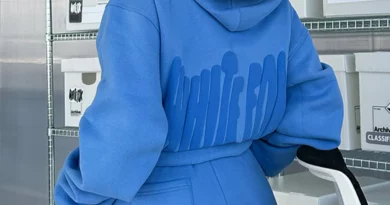Deck Boards and Waterproofing: How to Protect Your Deck from the Elements
Your deck is more than just an outdoor space; it’s an extension of your home, providing an area to relax, entertain, and enjoy the outdoors. However, as with any exterior structure, decks are exposed to the elements—rain, snow, sun, and humidity—which can cause wear and tear over time. This is particularly true for deck boards, which are constantly subjected to the forces of nature. To preserve their beauty, integrity, and functionality, waterproofing your deck boards is essential. Proper waterproofing can significantly extend the lifespan of your deck, reduce maintenance needs, and protect it from common issues like rot, mold, and fading.
In this article, we will explore the importance of deck boards and waterproofing, why it’s necessary, and how to protect your deck from the elements. From selecting the right waterproofing materials to applying them effectively, we’ll guide you through everything you need to know to maintain your deck in top condition for years to come.
1. Why Waterproofing Your Deck Boards Matters
Deck boards are exposed to a variety of weather conditions, including rain, snow, and intense sunlight. Over time, these elements can cause significant damage to your deck. Without proper protection, your deck boards may warp, crack, fade, or develop mold and mildew. Waterproofing is essential to prevent moisture from seeping into the wood or material of the deck boards, which can lead to structural damage, rot, and decay.
Here are the main reasons why deck boards and waterproofing go hand in hand:
1.1. Protection Against Water Damage
The most common cause of deck deterioration is water damage. When moisture seeps into the deck boards, it can cause the wood to expand, contract, and weaken. This can lead to splitting, warping, and eventual rot. For composite or PVC deck boards, although they are less susceptible to water damage, moisture can still accumulate underneath, causing issues like mildew growth.
Waterproofing your deck boards prevents water from penetrating the surface, helping to maintain the structural integrity of the material.
1.2. Preventing Mold and Mildew Growth
Moisture buildup can lead to the growth of mold and mildew on deck boards, which not only damages the deck but also creates an unhealthy environment. Mold can cause the wood to deteriorate quickly, and mildew can cause unsightly stains and odors. Waterproofing your deck boards helps to prevent moisture from being trapped in the material, reducing the likelihood of mold and mildew growth.
1.3. Extending the Lifespan of Your Deck
Waterproofing your deck boards can significantly extend the lifespan of your deck. By preventing moisture-related damage, you can avoid the need for expensive repairs or replacements. Regular maintenance, including waterproofing, will ensure that your deck remains strong and durable for years to come.
1.4. Maintaining Aesthetic Appeal
Deck boards, especially wood ones, are prone to fading due to exposure to UV rays. Waterproofing solutions that contain UV inhibitors can protect the color and texture of the deck boards, ensuring your deck remains visually appealing. Over time, untreated deck boards can lose their luster and appear weathered and worn.
1.5. Reduced Maintenance Costs
Waterproofing your deck boards not only protects the deck but also reduces the need for ongoing maintenance. A well-maintained deck will need fewer repairs, cleaning treatments, and refinishing jobs, saving you both time and money in the long run.
2. Types of Deck Boards and Waterproofing Solutions
The type of deck boards you have will determine the type of waterproofing treatment you should use. Whether you have wood, composite, or PVC deck boards, there are specific waterproofing solutions that will work best. Let’s take a closer look at these materials and their respective waterproofing options.
2.1. Wood Deck Boards
Wooden deck boards are the most traditional option, but they are also the most susceptible to water damage. Untreated wood can absorb moisture, which leads to rot, warping, and cracking. To protect wood deck boards, you should use a combination of a waterproofing sealant and a stain to provide long-lasting protection.
Waterproofing Solutions for Wood Deck Boards:
- Penetrating Sealers: These sealers soak into the wood and create an invisible barrier against moisture. They work well for preventing rot and mildew. Penetrating sealers are best for preserving the natural texture and grain of the wood.
- Stains with Waterproofing: Some deck stains contain waterproofing agents, which not only provide color but also protect against water. These stains are particularly useful if you want to enhance the aesthetic appeal of your deck while adding protection.
- Waterproofing Oils: Special oils can be applied to wood deck boards to keep the wood moisturized while preventing water penetration. These oils also add a natural sheen and help preserve the wood’s appearance.
2.2. Composite Deck Boards
Composite deck boards, which are made from a combination of wood fibers and plastic, are less susceptible to water damage than wood. However, they can still be prone to moisture accumulation, which can lead to mold and mildew growth. Waterproofing composite deck boards typically involves applying a protective coating to the surface.
Waterproofing Solutions for Composite Deck Boards:
- Polyurethane Coatings: A clear polyurethane coating is a great option for waterproofing composite deck boards. It provides a protective barrier while allowing the surface to retain its natural appearance.
- Acrylic Sealers: Acrylic-based sealers are another option for composite deck boards. These sealers form a protective film on the surface, preventing water from seeping into the material.
- Water-Based Deck Sealers: For composite decking with a wood-like appearance, water-based sealers provide an eco-friendly option. These sealers are effective at preventing moisture infiltration while also offering UV protection.
2.3. PVC Deck Boards
PVC (polyvinyl chloride) deck boards are made from plastic, which makes them naturally resistant to water damage. However, just like composite decking, PVC decks can accumulate dirt, grime, and mildew underneath the surface, especially in humid conditions. While PVC decks don’t require as much waterproofing as wood or composite, applying a protective coating can help keep them looking new for longer.
Waterproofing Solutions for PVC Deck Boards:
- Waterproofing Sprays: For PVC decking, a water-repellent spray can be applied to create an additional layer of protection. These sprays are typically easy to apply and help protect against moisture accumulation.
- UV-Resistant Coatings: Since PVC decking is susceptible to UV rays, applying a UV-resistant coating can help preserve the color and prevent fading.
3. How to Apply Waterproofing to Deck Boards
Now that you’ve selected the right waterproofing solution for your deck boards, it’s important to apply it properly to ensure maximum effectiveness. Follow these steps for applying waterproofing to your deck boards:
3.1. Clean the Deck
Before applying any waterproofing treatment, it’s important to thoroughly clean your deck. Dirt, grime, and debris can prevent the waterproofing product from adhering properly to the deck boards. Use a broom or a pressure washer to remove dirt and leaves. If your deck has mold or mildew, use a deck cleaner specifically designed for outdoor surfaces.
3.2. Repair Any Damage
Inspect your deck for any damaged or cracked boards. If you notice any issues, repair or replace the affected boards before applying waterproofing. Waterproofing products are most effective when applied to a smooth, intact surface.
3.3. Apply the Waterproofing Product
Depending on the product you’ve chosen, follow the manufacturer’s instructions for application. For liquid sealers, use a paintbrush or roller to apply the product evenly across the surface of the deck boards. If you’re using a spray-on product, spray a thin, even coat across the deck boards. Be sure to cover all exposed surfaces, including the edges and underside of the deck boards.
3.4. Allow the Deck to Dry
After applying the waterproofing treatment, allow the deck to dry completely before using it. Drying times can vary based on the product used and weather conditions, so be sure to check the manufacturer’s recommendations.
3.5. Reapply When Necessary
Waterproofing is not a one-time treatment. Over time, the protective coating will wear away due to exposure to the elements. Be sure to reapply the waterproofing treatment as needed—typically every one to two years, depending on the material and climate.
4. Tips for Maintaining Waterproofed Deck Boards
Once you’ve applied waterproofing to your deck boards, proper maintenance is key to ensuring long-lasting protection. Here are a few tips for keeping your deck in top shape:
- Regular Cleaning: Clean your deck regularly to prevent dirt, algae, and mold from building up. Use a mild soap solution or a deck cleaner to remove any buildup.
- Inspect for Damage: Periodically check your deck for signs of wear and tear, such as cracked boards or areas where the waterproofing has worn off.
- Address Issues Promptly: If you notice any damage or areas where the waterproofing has failed, address them immediately to prevent further issues.
Conclusion
Deck boards and waterproofing are a critical combination for preserving the integrity and beauty of your deck. Whether you have wooden, composite, or PVC deck boards, applying the right waterproofing treatments will protect your deck from the elements, prevent water damage, and extend its lifespan. By choosing the right waterproofing products and following the proper application techniques, you can ensure that your deck remains a functional and beautiful outdoor space for years to come. Regular maintenance and reapplication will also help keep your deck in pristine condition, allowing you to enjoy it year-round with minimal effort.




